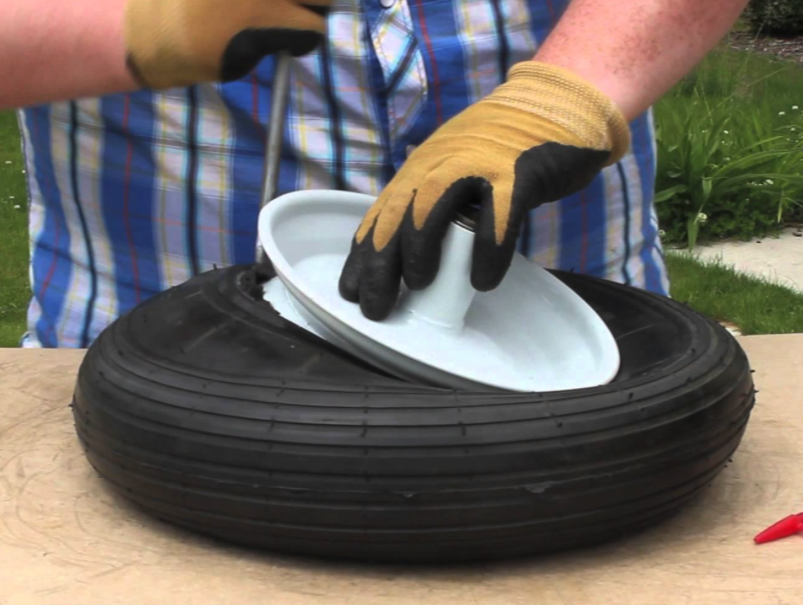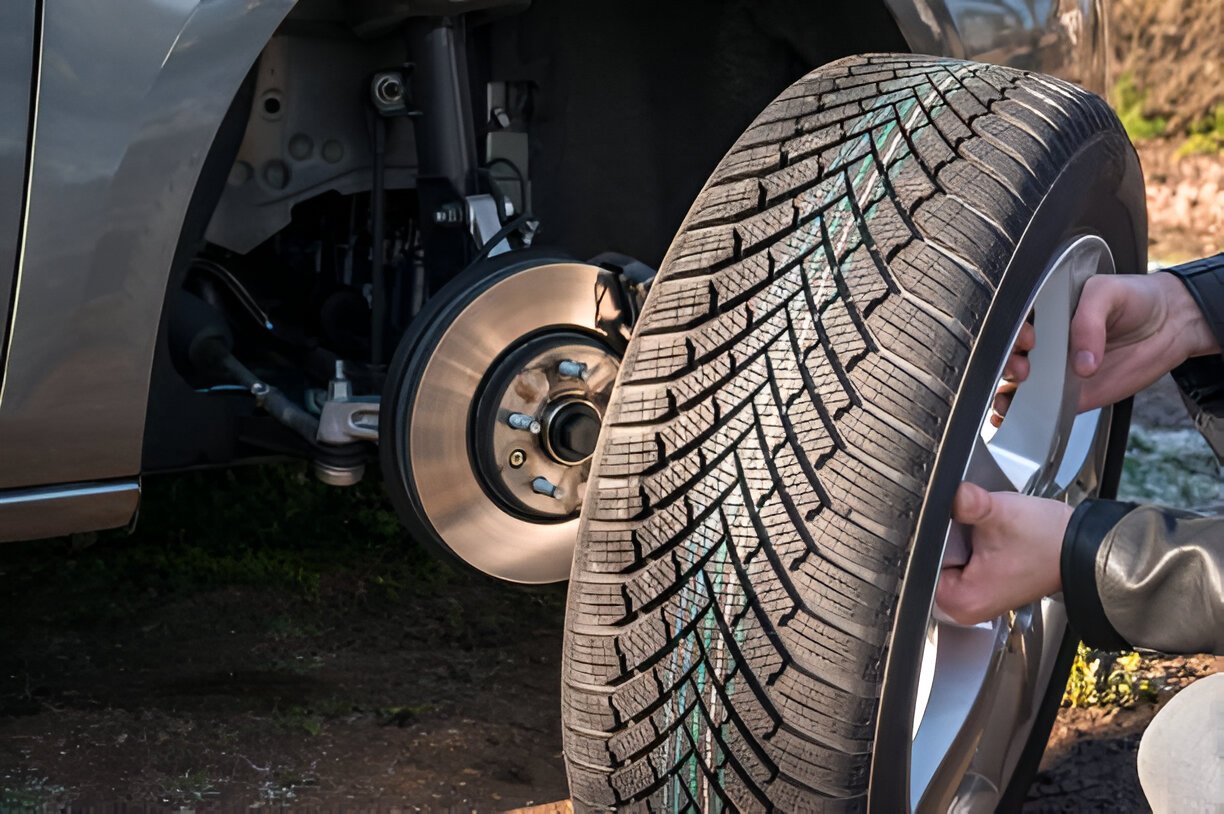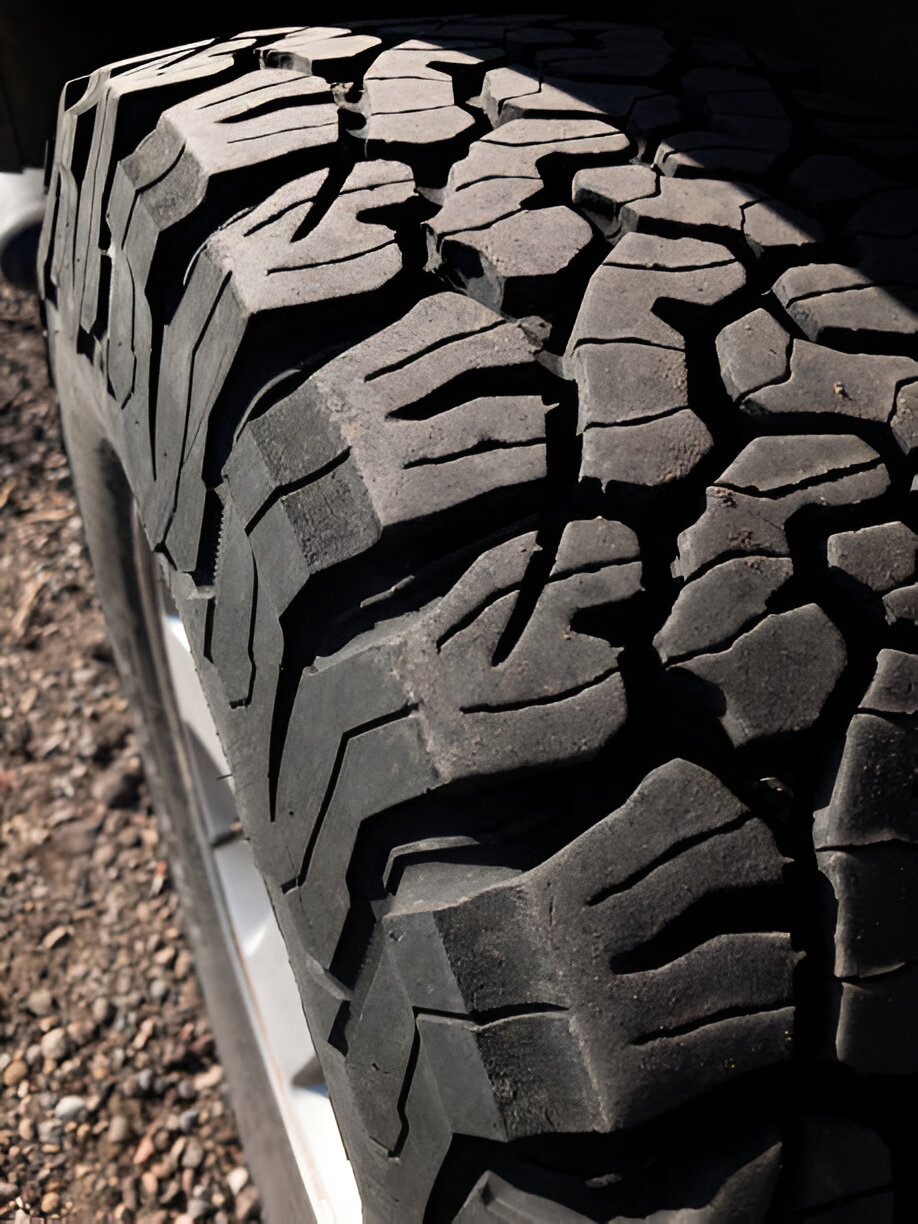Last Updated on October 28, 2024
Mastering Wheelbarrow Maintenance: Your Comprehensive Guide to Tire Repair
A flat wheelbarrow tire or a tire with a slow leak can be frustrating. Rather than taking the time to assess the damage and root cause of the problem, we sometimes opt for the costly solution of replacing the tire, replacing the entire tire and wheel assembly, or even tossing out the wheelbarrow.
It is expected to see discarded wheelbarrows at dumps and waste yards that could have been quickly returned to service with a minor wheelbarrow tire repair or tube replacement. Flat wheelbarrow tire repair, or buying and installing a new tire, is an easy, money-saving DIY project that anyone can do at home.
Wheelbarrows are an indispensable tool for many gardeners and DIY enthusiasts. But what happens when that trusty wheel starts to deflate? Don’t let a flat tire derail your gardening or construction projects! Dive into our comprehensive guide on wheelbarrow tire repair and get back to work in no time.
The Importance of a Reliable Wheelbarrow Tire
A well-functioning wheelbarrow tire ensures effortless material transport, from moving soil in your garden to hauling construction debris. It’s vital for efficiency and safety. Recognizing early signs of wear and damage can save you from unexpected tire failures during a task.
Common Causes of Wheelbarrow Tire Damage
- Punctures from Sharp Objects: This is the most common cause. Nails, thorns, or shards of glass can easily pierce the tire.
- Wear and Tear: Over time, the continuous load on the tire can cause it to wear out.
- Weather Conditions: Extreme weather can crack or damage the rubber.
Tools Needed for Wheelbarrow Tire Repair
To remove and replace the tire from the wheel, all that is needed is a large flathead screwdriver and a hand tire pump. You will also need a wrench to remove the wheel and tire assembly from the wheelbarrow. This is quickly done by loosening one or both brackets holding the axle to the wheel. If you have a tubeless tire with a puncture in the tire’s tread area, you will need a plug repair tool instead of the flathead screwdriver.
Step-by-Step Guide to Repairing Your Wheelbarrow Tire

1. Once the flat wheelbarrow tire is off the wheelbarrow, you can conduct a thorough visual inspection. First, inspect the wheel for damage and the tire for apparent leak sources. You also want to check the amount of wear on the tread rubber and the amount of cracks in the tire due to dry rot.
If the tire is badly rotted with deep cracks in the side of the tire, or the tread is worn and not providing sufficient traction, you should consider buying a replacement tire. A wheelbarrow tire could cost between 15 and 40 dollars to deliver right to your door, compared to the $150 or more for a new wheelbarrow. If the wheelbarrow is in good condition, a new tire can make it work like new.
2. If the source of the leak is not readily identifiable on a tubeless tire (like a hole or object stuck in the tread), you need to inflate the tire to find the source of the leak. If the tire is entirely flat and won’t easily seat against the wheel flange, you can tighten a rope around the outside of the tire to push the tubeless tire against the wheel and get a good seal.
If the wheel is severely bent, you may need a new one. However, minor dents in the wheel flange usually don’t cause problems, particularly for tube-type tires. Adding a tube to a tubeless tire and wheel assembly is a cheaper alternative to buying a new wheel, even if it is damaged and leaking air between the wheel and the tire itself.
3. For a tube-type tire, the tire must be removed from the rim. Use the flathead screwdriver to pry the tire off the rim, as shown in this video. Once one part of the tire is over the wheel range, one side will easily twist off the wheel. Turn the wheel over, and repeat for the other side of the tire. Be careful not to pinch the tube between the screwdriver and the wheel flange.
A tubeless tire can often be repaired by leaving the tire on the wheel and using a plug. Repairing a hole in a tubeless tire is much easier, but it does take some specialized equipment. Here is a video on how to plug a tubeless tire. Once the tire is filled and the plug is trimmed, the tire and wheel are ready to be installed back onto the wheelbarrow.

4. Once the tube is removed, it can be inflated and submerged in a bucket of water to find the source of the leak. The bubbles will identify even pinpricks from thorns or otherwise hard-to-see damage. The area around the hole should be roughened using fine-grit sandpaper or a wood file. Coat the area to be repaired with rubber cement and apply the patch.
If the tube cannot be repaired, and the tire is still in good condition, consider buying a replacement tube. A wheelbarrow tube will cost under $10, a fraction of a new wheelbarrow or even a new tire and wheel.
5. Once the tube repair has fully cured, it is time to install the tire and tube back on the wheel. First, insert the deflated tube in the tire and reposition one side of the tire back in the wheel. For a tube-type tire, you will need to position the tube valve in the wheel hole. Once aligned, the other half of the tire can be pried onto the tire.
6. The tire or tube is now ready to be inflated to the psi suggested on the side of the tire. Replace the axle and fasten the wheel and tire assembly to the wheelbarrow.
Prevention is Better than Cure
To prolong the life of your wheelbarrow tire:
- Regularly inspect for early signs of damage.
- Store your wheelbarrow in a sheltered area, away from direct sunlight.
- Avoid overloading the wheelbarrow.
- Invest in puncture-resistant or solid wheelbarrow tires for heavy-duty tasks.
Buying Replacement Tires if Wheelbarrow Tire is Beyond Repair
If your flat wheelbarrow tire or tube is too damaged or worn to be repaired, then www.tires-easy.com is your best option for inexpensive wheelbarrow tires. They have a large variety of wheelbarrow tires at low prices. Armed with the needed tire size, you can easily find your replacement tire with fast and convenient ordering and shipping direct to your home.
Conclusion
In wrapping up our discussion on wheelbarrow tire repair, it’s evident that maintaining and fixing these tires is crucial for prolonged use and efficiency in gardening or construction tasks. Whether patching up a puncture or reseating a tire onto its rim, the proper techniques can save time and money.
Always prioritize safety and, when in doubt, consult with professionals. A deflated wheelbarrow tire shouldn’t hamper gardening and construction tasks. With some knowledge and the right tools, you can repair your wheelbarrow tire and swiftly get it back in action.
It’s all about being proactive, regularly inspecting for wear and tear, and understanding the simple repair process. Remember, a well-maintained wheelbarrow tire ensures smoother operations and less downtime.
Are you ready for a tire replacement or looking for high-quality wheelbarrow tires? Dive into our extensive collection at Tires Easy and ensure your wheelbarrow is always ready to roll!
FAQs
Can wheelbarrow tires be repaired?
Yes, wheelbarrow tires can be repaired, much like any other tire. If the tire is punctured, it can often be patched or filled. It may be more cost-effective to replace the tire for more severe damages.
Is my wheelbarrow tire tubeless?
Wheelbarrow tires can be either tubeless or have inner tubes. To determine if your wheelbarrow tire is tubeless, inspect the valve stem. If it’s directly attached to the wheel, it’s likely tubeless. Another method is to deflate the tire; if it comes off the rim easily, it probably has a tube.
How do you fix a wheelbarrow tire with foam?
You can use a tire sealant foam to fix a wheelbarrow tire with foam. First, remove any object causing a puncture. Shake the can of tire foam well, attach the hose to the tire’s valve stem, and fill the tire according to the product’s instructions. The foam will both inflate and seal the tire. However, this is often a temporary solution, and the tire may require further repair or replacement.
How do you put a tire back on a wheelbarrow rim?
To put a tire back on a wheelbarrow rim, first deflate it entirely if it has a tube. Using a flat tool, gently pry one side of the tire over the rim. Once one side is on, work on the opposite side using your hands or the tool, ensuring the tube (if present) isn’t pinched. Once the tire is seated correctly, inflate it to the recommended pressure. Ensure it’s sitting evenly all around the rim before fully extending.
-
Writer










 English
English Français
Français Español
Español